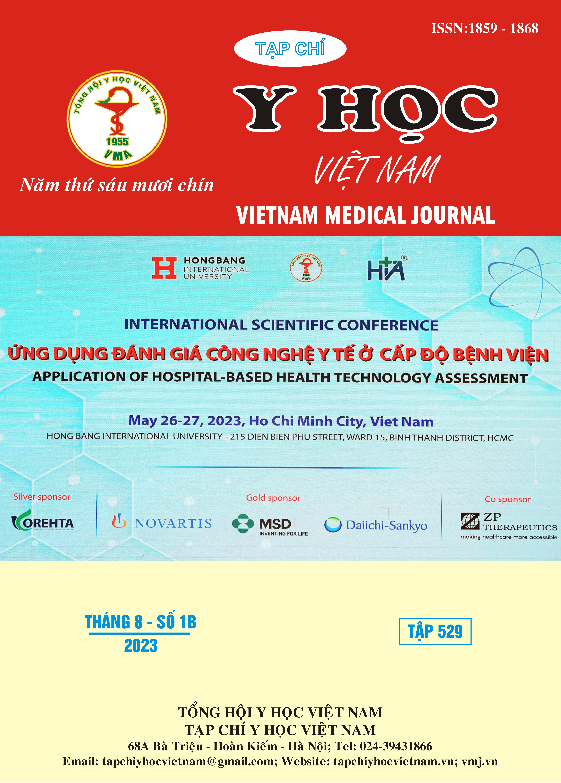RESEARCH ON THE RELATIONSHIPS BETWEEN ALTERATION OF SERUM sST2 CONCENTRATION AND SOME CLINICAL FEATURES IN PATIENTS WITH CHRONIC HEART FAILURE AFTER A TREATMENT
Main Article Content
Abstract
Objectives: To evaluate the relationship between change in serum sST2 concentration and some clinical symtomps in patients with chronic heart failure (HF) after a course of treatment. Subjects and methods: a total of 116 patients diagnosed as chronic HF being treated at Military Hospital 103 and Hospital 198 were collected from November 2019 to October 2022. Serum sST2 level was quantified by ELISA. The pearson rank correlation coefficient or the Independent Samples T-Test was used to assess the relationships between the log (sST2) and the patient's clinical symptoms. Results: After a treatment, the mean of log (sST2) was significantly decreased as compared with before treatment. Decreased sST2, NT-proBNP levels and increased left ventricular systolic ejection fraction (LVEF) after the treatment was found. The decrease in sST2 concentration after the treatment was positive and significant correlation with the improvement of the patient's NYHA class. However, the decrease in NT-proBNP concentration or the increase in LVEF after the treatment was not correlated with the improvement of the NYHA class. Conclusion: The alteration of serum sST2 concentration after a course of treatment was related to the change in clinical symptoms in patients with chronic HF.
Article Details
Keywords
sST2, chronic heart failure, NYHA, LVEF
References
2. Phạm Nguyên Sơn. Đặc điểm lâm sàng và cận lâm sàng của những bệnh nhân suy tim tâm thu và suy tim tâm trương. Tạp chí Y học Việt Nam, 2007(6): p. 7-13
3. Aldweib N, Elia EG, Brainard SB, et al. Serial cardiac biomarker assessment in adults with congenital heart disease hospitalized for decompensated heart failure☆. Int J Cardiol Congenit Heart Dis. 2022, 7:100336.
4. Daniels LB, Clopton P, Iqbal N, et al. Association of ST2 levels with cardiac structure and function and mortality in outpatients. American heart journal, 2010. 160(4): p. 721-728.
5. Authors/Task Force Members:; McDonagh TA, Metra M, et al., 2021 ESC Guidelines for the diagnosis and treatment of acute and chronic heart failure: developed by the Task Force for the diagnosis and treatment of acute and chronic heart failure of the European Society of Cardiology (ESC). With the special contribution of the Heart Failure Association (HFA) of the ESC. European journal of heart failure, 2022. 24(1): p. 4-131.
6. Pascual-Figal DA, Januzzi JL. The biology of ST2: the International ST2 Consensus Panel. Am J Cardiol, 2015. 115(7 Suppl): p. 3b-7b.
7. Piper SE, Sherwood RA, Amin-Youssef GF, et al., Serial soluble ST2 for the monitoring of pharmacologically optimised chronic stable heart failure. International Journal of Cardiology, 2015. 178: p. 284-291.


